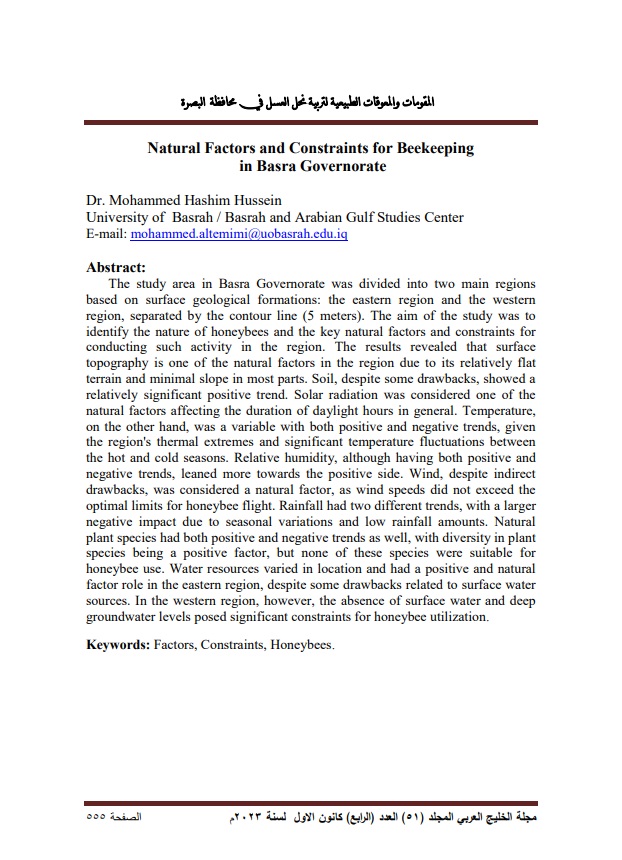Natural Factors and Constraints for Beekeeping in Basra Governorate
Keywords:
Factors, Constraints, HoneybeesAbstract
The study area in Basra Governorate was divided into two main regions based on surface geological formations: the eastern region and the western region, separated by the contour line (5 meters). The aim of the study was to identify the nature of honeybees and the key natural factors and constraints for conducting such activity in the region. The results revealed that surface topography is one of the natural factors in the region due to its relatively flat terrain and minimal slope in most parts. Soil, despite some drawbacks, showed a relatively significant positive trend. Solar radiation was considered one of the natural factors affecting the duration of daylight hours in general. Temperature, on the other hand, was a variable with both positive and negative trends, given the region's thermal extremes and significant temperature fluctuations between the hot and cold seasons. Relative humidity, although having both positive and negative trends, leaned more towards the positive side. Wind, despite indirect drawbacks, was considered a natural factor, as wind speeds did not exceed the optimal limits for honeybee flight. Rainfall had two different trends, with a larger negative impact due to seasonal variations and low rainfall amounts. Natural plant species had both positive and negative trends as well, with diversity in plant species being a positive factor, but none of these species were suitable for honeybee use. Water resources varied in location and had a positive and natural factor role in the eastern region, despite some drawbacks related to surface water sources. In the western region, however, the absence of surface water and deep groundwater levels posed significant constraints for honeybee utilization.




